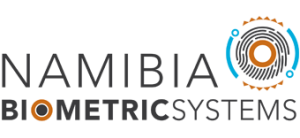Biometrics in Automated Border Control (ABC)
Border control plays a critical role in securing any Nation’s borders between Ports of Entry (POEs) against all threats. Research analysts at our Biometric Research Laboratory, BRL, approach border control from a risk-based orientation which allows the border control teams to apply Information, Integration and Rapid Response in the most targeted, effective, and efficient manner. Therefore, border control teams must be given the tools and resources to execute their jobs efficiently. Traditional border control methods require the border control officer to compare a picture in the passport to your face. Traditional methods have their limitations such as:
Exhaustion – Imagine being a border control officer comparing old passport photographs to a passenger’s faces all day in addition to checking other vital information. How long will it take before your concentration runs out? Analysts at BRL believe that most passengers are allowed through boarder control without being properly authenticated when staff have been working for a long period of time without sufficient breaks.
Nationality – Imagine being a border control officer analysing passport photographs of different nationalities all day in addition to checking other vital information. Which Nationality would you find easier to analyse? Analysts at BRL suggest that people find it easier to analyse photographs of people from the same nationality as themselves. Therefore, more passengers are likely to pass through border control without been properly authenticated if their being served by someone of different Nationality.
Image – Passport pictures are generally taken in a controlled environment. That is, the lightning and pose are controlled. Imagine being a border control officer analysing passport photographs of passengers with different hairstyles, facial wears and mark-ups all day in addition to checking other vital information. Analysts at BRL highlight that the ability of humans to recognize a human face is a function of hairstyles and facial wear. Therefore, more passengers are likely to pass through border control without been properly authenticated if the passenger’s hairstyle and facial wear are different from the picture in the passport.
The above limitations can be easily be resolved by biometrics at border control by using Automated Border Control (ABC). ABC is defined as the use of automated or semi-automated systems which can verify the identity of travellers at border crossing points (BCPs), without the need for human intervention. Generally, an ABC system consists of one or two physical barriers (e-Gates), document readers, a monitor displaying instructions, a biometric capture device and system management hardware and software.
More information on the implementation of biometrics based solutions can be requested from info@namibiabiometricsystems.com.
